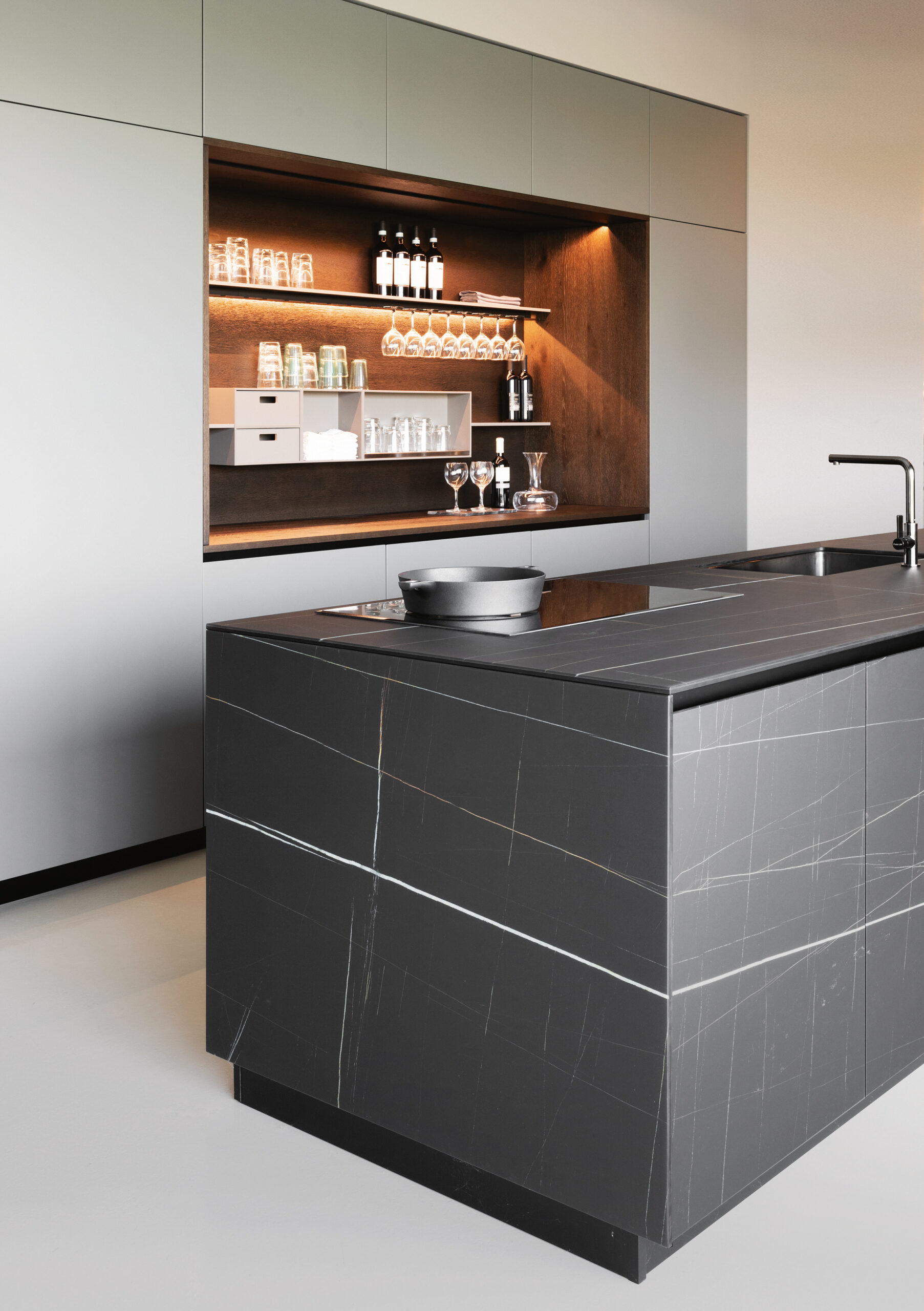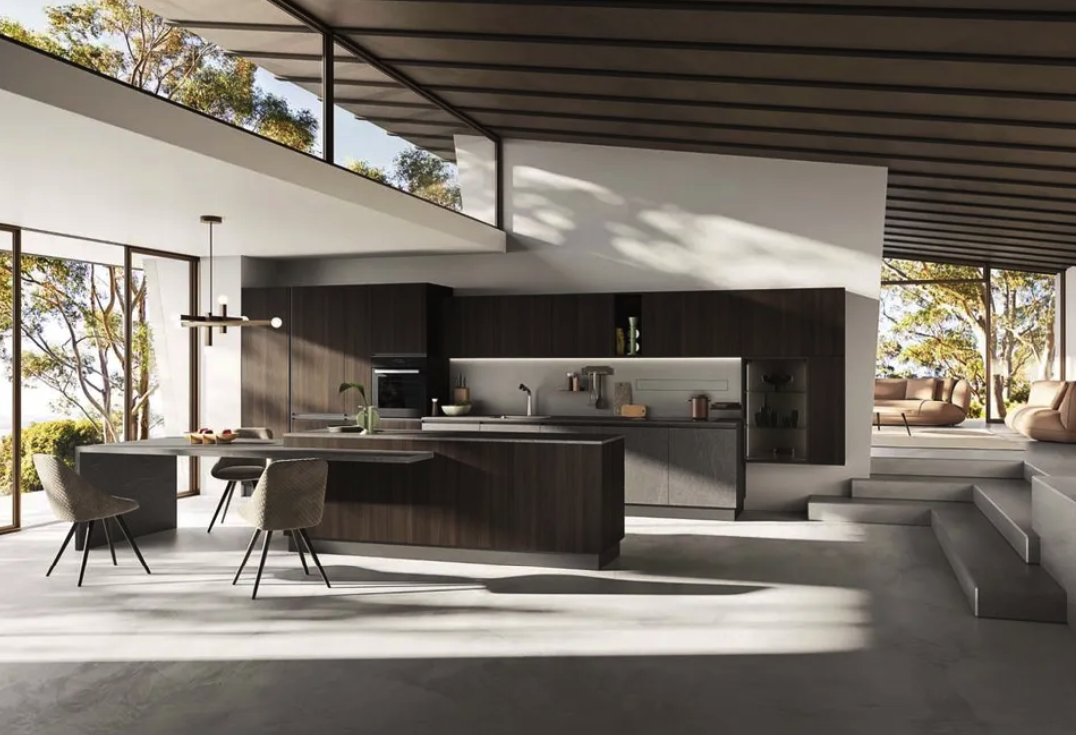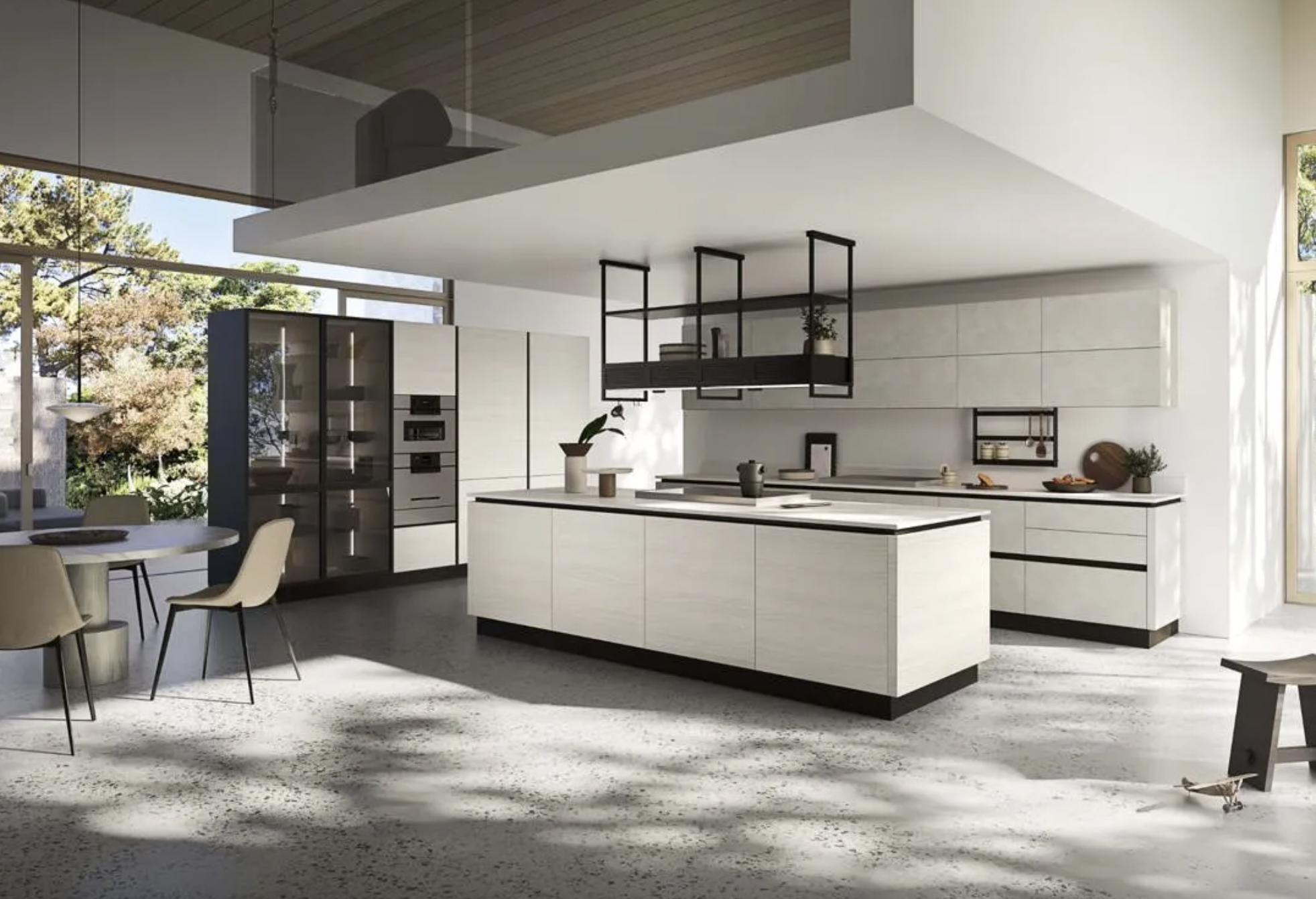Lighting is one of the most transformative elements in a luxury kitchen design, shaping its functionality and aesthetic appeal. A well-planned lighting scheme ensures optimal visibility for cooking and meal preparation and enhances the ambiance, making the space feel warm and inviting. By layering different types of lighting for overall illumination, you can highlight architectural features, enhance color schemes, and create a more open and welcoming environment. Additionally, lighting, in particular, creates a sense of comfort and relaxation; it also enhances social interactions by fostering a welcoming atmosphere and naturally encouraging conversation, making it ideal for kitchen family gatherings.
As an interior designer, I believe lighting is essential in crafting a beautiful and dynamic space. Here’s why lighting matters and how you can incorporate these essential elements into your own kitchen.
Layered Lighting: Enhancing Flexibility and Functionality
Layered lighting is essential to any kitchen design; it combines three types of light—ambient, task, and accent lighting—to create a well-balanced, functional, and visually appealing space. Ambient lighting provides illumination, ensuring the kitchen is bright enough for everyday tasks. LED pendants and track lights are ideal for their energy efficiency and dimmable features. Task lighting, such as adjustable LED track lights or under-cabinet fixtures, focuses on specific work areas like countertops and cooking zones, offering targeted brightness for precision tasks. Accent lighting enhances the kitchen’s aesthetic by highlighting architectural details, decor, or open shelving, adding depth and dimension to the space.
As an interior designer, I believe lighting is essential in crafting a beautiful and dynamic space. Here’s why lighting matters and how you can incorporate these essential elements into your own kitchen.


The Power of Natural Light in Kitchen Design
Natural light is fundamental in kitchen design, enhancing the space’s functionality while creating a bright, inviting atmosphere. Large windows, skylights, or glass doors allow sunlight to flood the space, making it feel more open and airy while reducing the need for artificial lighting during the day. Natural light highlights design elements like cabinetry, countertops, and textures and improves mood and overall well-being. Incorporating natural light into your kitchen design creates a warm, refreshing environment that blends beauty, comfort, and sustainability
Enhancing Light and Space by reflective surfaces
In a luxury kitchen design, reflective surfaces are crucial in amplifying light and creating a sense of depth, making the space feel more extensive and vibrant. Glossy and glass finishes on cabinets, glass backsplashes, polished countertops, and stainless steel appliances help bounce natural and artificial light throughout the kitchen, enhancing brightness and reducing the need for additional lighting. Mirrors or high-gloss materials can further maximize illumination, adding a touch of sophistication while visually expanding the room. By incorporating reflective elements, you can create a sleek, modern, and airy kitchen that feels elegant and spacious.


The Dance of Light and Shadow: Introducing Depth and Personality
The play of light and shadow in kitchen design can add depth, intrigue, and character to the space, transforming it from functional to visually dynamic. Strategic placement of lighting fixtures, such as under-cabinet lights, pendants, and spotlights, creates shadows that emphasize architectural details, textures, and materials. This interplay enhances the aesthetic appeal and brings warmth and coziness to the kitchen, making it feel inviting and unique. By balancing light and shadow, you can create focal points, define zones within an open-plan layout, and add a sense of drama, elevating the overall atmosphere and style of the kitchen. When assessing an empty room, we observe key elements such as textured walls, layered ceilings, furniture shapes, and distinctive lighting types that cast interesting shadows. These shadows contribute warmth and visual intrigue, giving the room a sense of depth and complexity and making it feel inviting and full of character.



